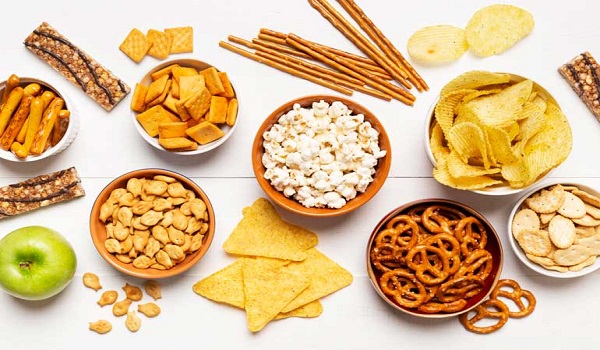Transforming Every Grain, Fruit, and Vegetable into a Snack Sensation
A stroll down the snack aisle in a local supermarket reveals a staggering variety of products, ranging from healthy options like vegetable sticks and nuts to indulgent treats such as fried, deep-fried, baked, grilled, air-fried, or roasted snacks. The market is teeming with flavours like creamy cottage cheese, yogurt, hummus, avocado, salt and pepper, and more. Every grain, fruit, or vegetable seems to be transformed into a snack.
The mantra of ‘root to fruit’ is evident, with options expanding to include brinjal, banana, lady’s finger, jackfruit, and potato chips, as well as chana dal, roasted peanuts, and moong dal. The sector is experiencing significant growth due to a rising population, increasing income levels, and evolving consumer preferences. According to a report by IMARC Group, the Indian snacks market is expected to reach Rs. 95,521.8 crore by 2032, growing at a CAGR of 9.08%.
Major players, including global giants like PepsiCo with brands like Lay’s, Cheetos, and Doritos, as well as local favourites like Haldiram’s, Bikaji, and ITC, are capitalizing on the increasing demand. Traditional sweets and snacks brands like Haldiram’s have witnessed substantial sales growth, recording snacks worth Rs. 9,215 crores for the fiscal year ending March 2023, a 19% increase from the previous year.
The snack market is diverse, with regional players like Balaji Wafers, Prabhuji, and Prataap Snacks, along with niche brands like BRB, Too Yum, and Farmley, contributing to the overall demand. The packaged food industry, standing at approximately Rs 3.75 trillion, sees snacks and sweets comprising 33.4%, and the sector is predicted to grow at a CAGR of 15-16% in the next two to three years.
Consumer preferences for regional and spicy profiles have led to the introduction of new formats and flavours. PepsiCo India, for example, has expanded its range to align with local preferences, launching products like the ‘Sizzlin’ Hot range’ and Kurkure Chaat Fills. Packaging size also plays a crucial role, with the popularity of low-unit packs priced at Rs 1, Rs 5, and Rs 10 per unit.
Innovation in flavours is a key driver, with brands introducing new tastes inspired by the diverse food culture of the country. Additionally, health-conscious choices are gaining traction, and the post-COVID world has further shifted snacking consumption patterns. Brands like Tata Soulfull and Farmley are focusing on healthier alternatives, incorporating millets and air-fried options to cater to the growing demand for nutritious snacks.
The air-fried segment, despite being costlier, is gaining popularity, constituting a 12% share of the total snacking category consumption. Superfood brands like Nourish You and Farmley are capitalizing on the demand for innovative and nutritious snacks, offering products like premium nut mixes, power-packed fills, and makhana-based snacks.
The future of the snacking industry in India looks promising, with the healthy snacking market projected to grow at an impressive CAGR of over 20% from 2020 to 2025, according to the Ministry of Food Processing Industries. Changes in consumption patterns and evolving consumer lifestyles are fuelling the demand for healthy snacks with new flavours, contributing to the industry’s continued growth.


